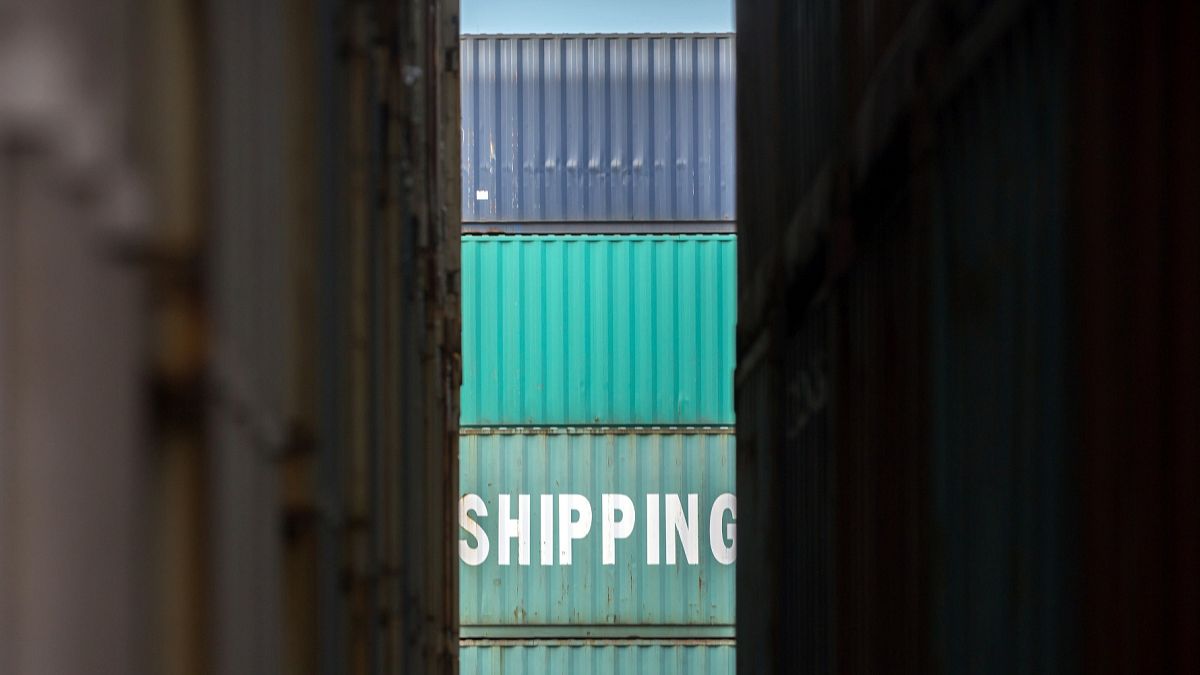The return of Donald Trump to the White House and the trade war between the United States and China have put the India-Middle East-Europe Economic Corridor (IMEC) back in the spotlight.
This logistics corridor project, which was officially launched in 2023 at a G20 summit in Delhi, aims to facilitate trade in goods, energy and data.
This new trade route would bypass the Suez Canal and link Europe to India via Israel and the Gulf monarchies.
“We need a corridor like this more than ever, because not only do we have to deal with the problems we have with China, but we also have to deal with the fact that we are now in regional competition between the United States, China and Europe,” MEP Morten Løkkegaard (Renew Europe/Denmark) told Euronews.
“Production in India is much closer to Europe than in China”, which would reduce delivery times, adds MEP Niels Flemming Hansen (EPP/Denmark) and vice-chairman of the European Parliament’s delegation for relations with India.
Several entry points into Europe are on the table: the ports of Piraeus in Greece, Marseille in France and Trieste in Italy.
“We should think of IMEC not as a line but as a network, so that its own resilience and ability to withstand disruption would be considerably increased if it were based on different entry points”, says Alberto Rizzi, a policy researcher at the European Council on Foreign Relations (ECFR).
“France seems to be ahead of the other European parties,” Rizzi added.
Competition from China?
According to Rizzi, not all the participating countries have the same motivations. In addition to better access to European and Gulf markets, India is looking for a way to escape China’s encircling strategy.
The Gulf monarchies see an opportunity to position themselves at the centre of future trade in goods and energy.
For its part, the European Union is seeking to reduce its dependence on China through a de-risking strategy.
“It’s also a way of bringing not only the world’s largest democracy, but also the most populous country and the potential of an enormous commercial and industrial partner, India, ever closer to the European orbit,” Rizzi explained.
While the New Spice Route is seen as a means of competing with the New Silk Roads project initiated by Beijing, the researcher doubts its ability to rival the Chinese economic corridor.
“We should not see the IMEC as a competitor because the New Silk Road is a global initiative by China that essentially encompasses the whole world, whereas the IMEC has a key regional dimension,” said Rizzi.
“We should not see, especially in the case of the Gulf countries, a commitment to the IMEC as a way of closing the door on China.”
Although the Israel-Hamas war in Gaza slowed down the New Spice Route project, it now seems to be enjoying renewed interest.
The European Union and the Gulf states are not the only ones courting the Asian giant. The United States is also on board, as evidenced by US Vice President JD Vance’s recent trip to India to negotiate a bilateral trade agreement between Washington and New Delhi.
![‘Watson’ Team Has to Choose to Let Either [Spoiler] or [Spoiler] Die Before Season 1 Finale ‘Watson’ Team Has to Choose to Let Either [Spoiler] or [Spoiler] Die Before Season 1 Finale](https://www.usmagazine.com/wp-content/uploads/2025/05/Watson-Team-Has-to-Choose1.jpg?crop=0px%2C0px%2C3000px%2C1576px&resize=1200%2C630&quality=86&strip=all)


